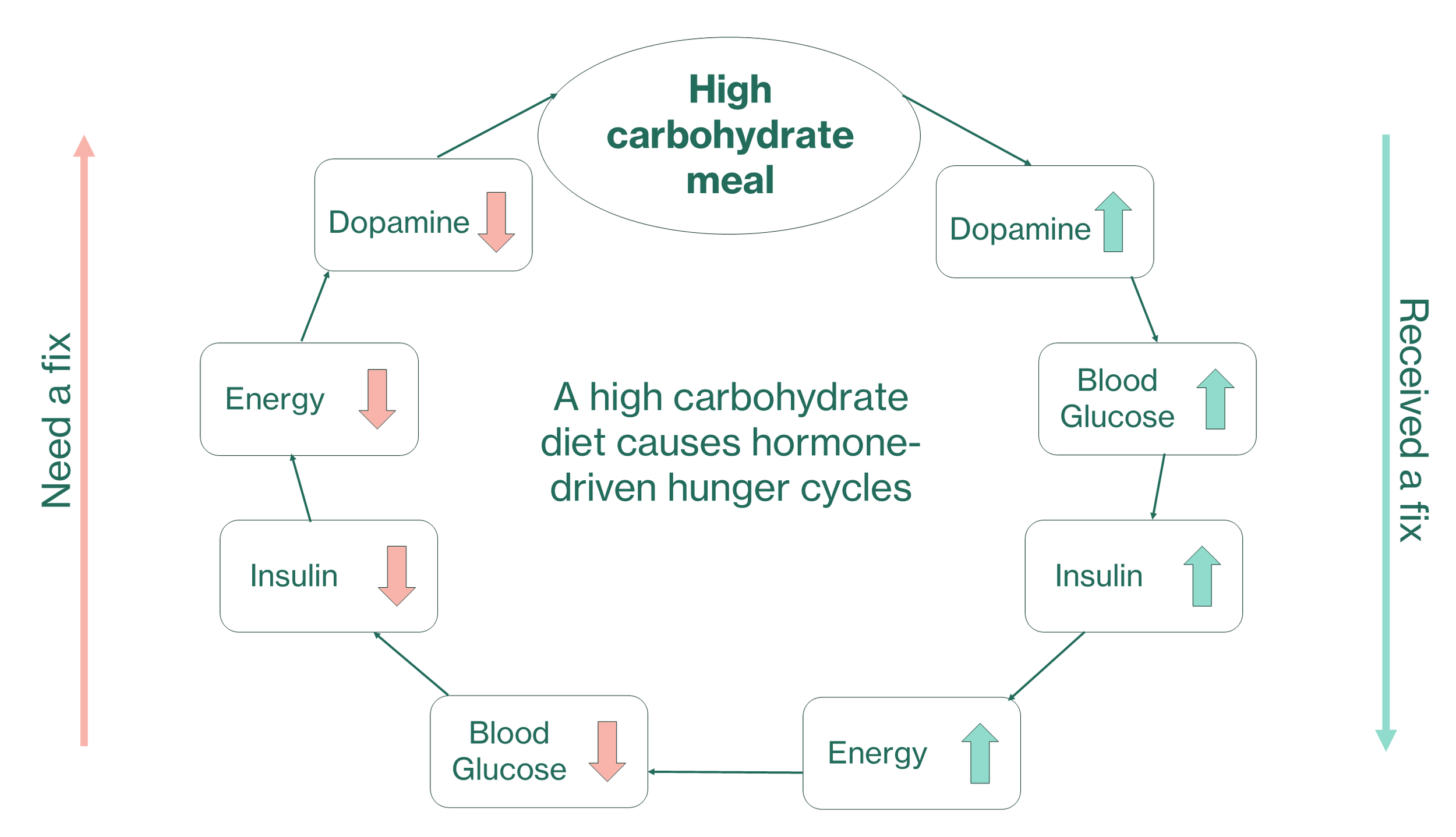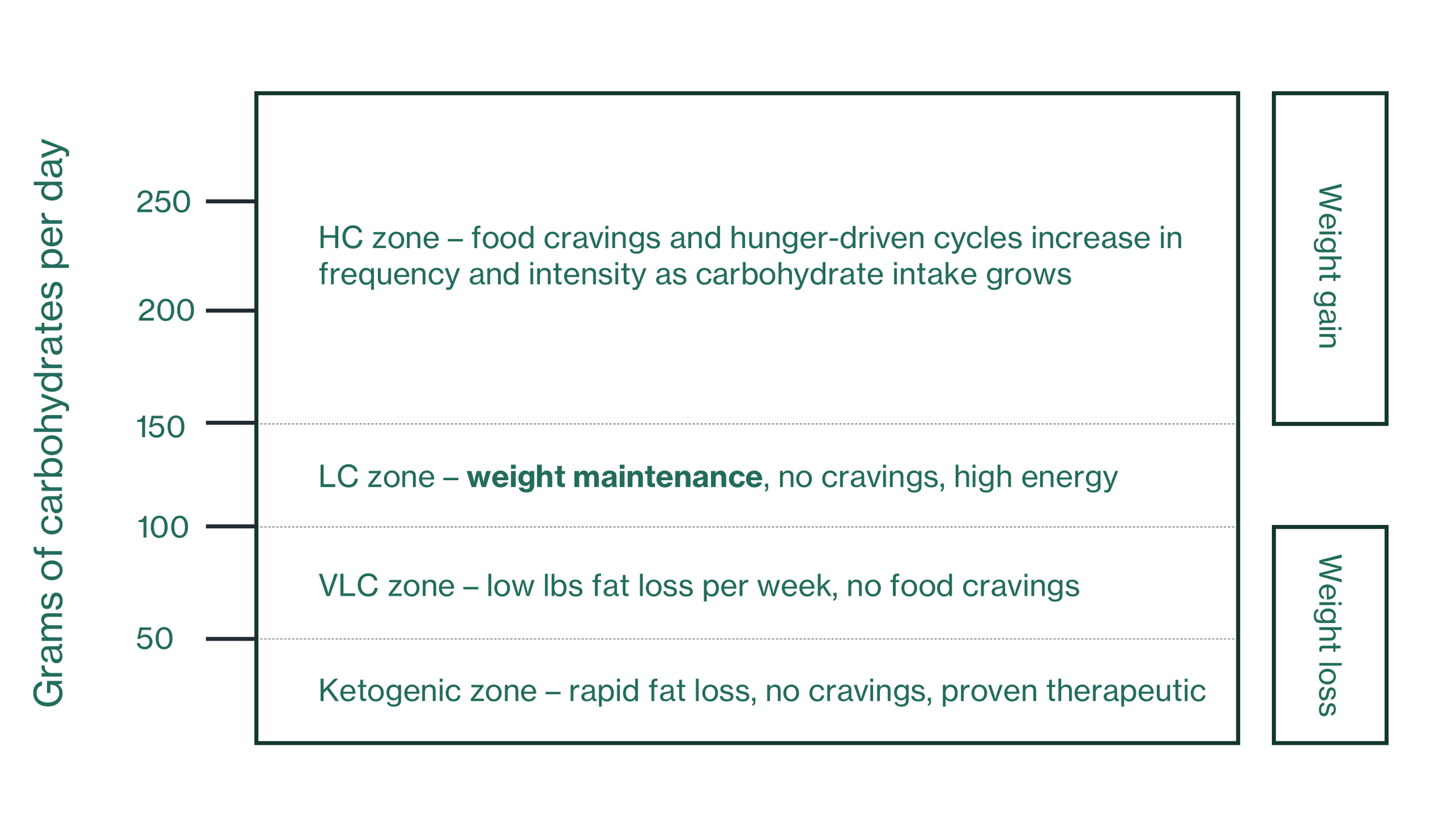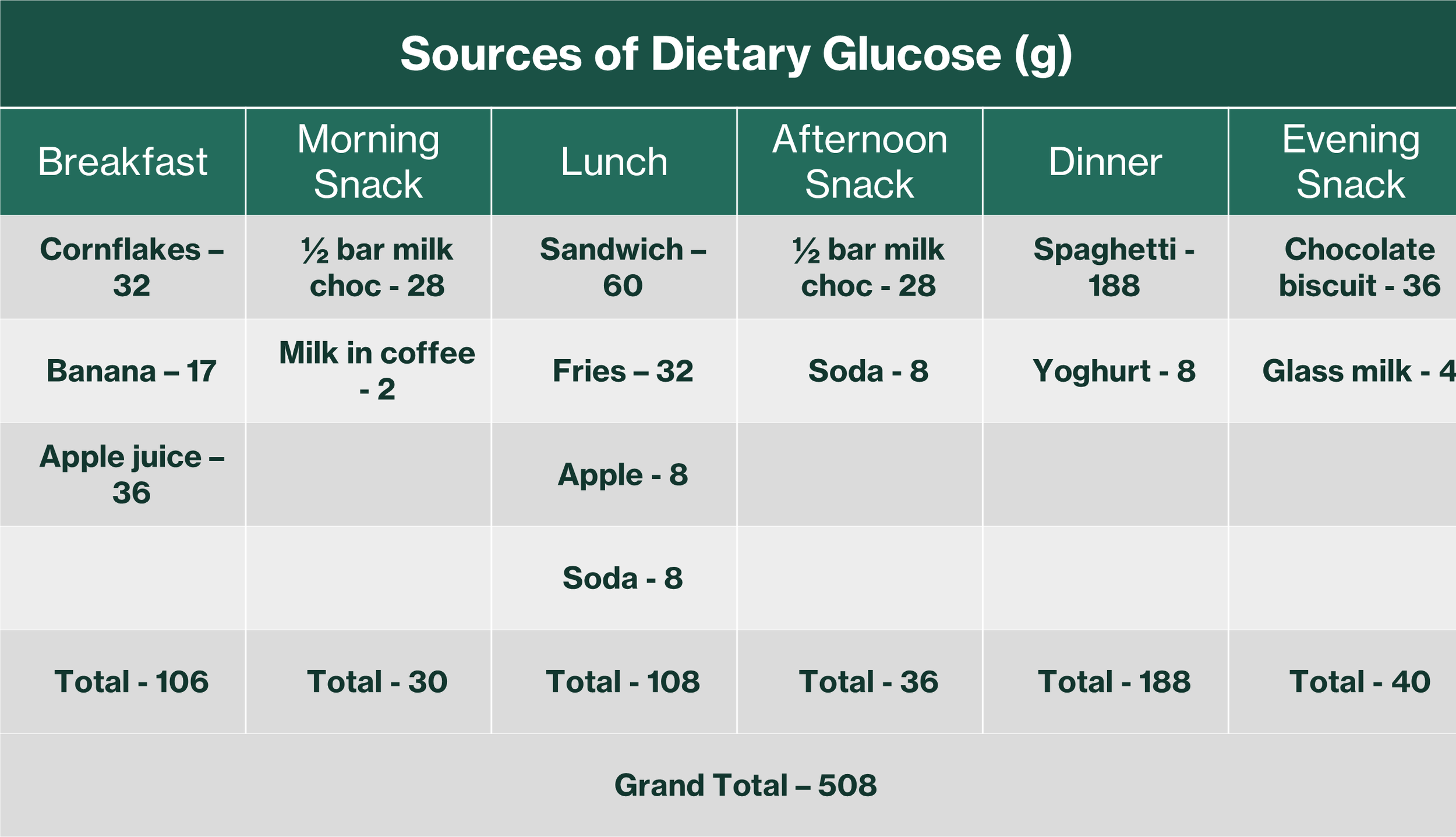The Hidden Dangers of Modern Food: Understanding and Overcoming the High-Carbohydrate Trap
In a nutshell
Modern food is excessively high in sugar and starch, though most of us don’t realise
Such high-carbohydrate intake is detrimental to health, yet many accept illness as inevitable
Eating healthily is straightforward—once we understand how
Constantly eating starchy food is unhealthy
When discussing modern food with family and friends, I often find that they don’t fully grasp just how loaded it is with sugars and starches. Many also fail to recognise that our bodies quickly convert these ingredients into glucose, which, when consumed in excess, leads to fat accumulation and weight gain.
I have written extensively about how seed oils and bioavailable carbohydrates, particularly those in industrially processed foods, contribute to malnutrition, weight gain, chronic illnesses, including my own heart disease.
In this article the carbohydrates I focus on are those readily bioavailable meaning they are taken up (absorbed) by our body and turned into energy. They are different from those carbohydrates that we don’t absorb but that pass through our gut to be fermented by our gut microbiota or passed through as roughage.
In this article, I aim to:
Explain how a high-carbohydrate diet leads to weight gain and illness
Identify common addictive high-carb foods
Provide strategies to eliminate these dietary traps
Figure 1: After a high carbohydrate meal, humans produce hormones that make us feel good (dopamine), keep our blood glucose at safe levels (insulin), and provide energy. Once that process is completed, the effects are reversed
A High-Carbohydrate Diet leads to Weight Gain and Illness
When we eat a high-carbohydrate meal, our body derives energy from it, but two important hormonal changes also occur:
Dopamine Release: This hormone activates the brain’s reward center, making us feel good after eating.
Insulin Spike: The body releases insulin to regulate blood glucose levels, ensuring they stay within a safe range.
The metabolic journey from meal to energy is presented in Figure 1. This can lead to an addictive cycle where the body craves repeated carbohydrate consumption (Figure 2). The more frequently we eat high-carb meals, the more we reinforce this pattern (Figure 3). It should come as no surprise that research suggests that added sugars are addictive [1]:
“Studies suggest that added sugars are as addictive as cocaine, nicotine, alcohol, tobacco, and caffeine”
Over time, constant insulin spikes result in insulin resistance and hyperinsulinemia, conditions that increase the risk of obesity, type 2 diabetes, non-alcoholic fatty liver disease, and high blood pressure. Even when I indulge in occasional high-carb meals that include things like like dessert or fruit juice, I notice an energy crash and a craving for more carbs shortly after. This starkly contrasts with my usual low-carb diet and highlights the addictive nature of high-carb foods.
Figure 2: Eating repeated high carbohydrate meals creates an addictive cycle of hormone-driven hunger
Figure 3: Hormone-driven hunger results in the consumption of frequent meals throughout the day - reinforcing the addiction
Common Addictive High-Carbohydrate Food
Understanding what constitutes a high-carb diet is essential. We can categorize carbohydrate intake into three broad groups (Figure 4):
Weight Loss Diets:
Ketogenic (<50g carbs/day)
Very Low-Carb (50g-100g/day)
Maintenance Diet:
Low-Carb (100g-150g/day)
Weight Gain Diet:
High-Carb (>150g/day)
Figure 4: Weight loss or gain is determined by the amount of carbohydrate consumed
I’ve provided references below that describe ketogenic and other diet types [2,3]. My definition of low carbohydrate is less that 150g. This is in line with a recent paper [3] which puts low carb at 130g or less.
Using real dietary examples, a common high-carb daily diet (values from David Unwins invaluable graphics) can contain over 500g of glucose, far exceeding healthy levels (Table 1). Even eliminating snacks and breakfast still results in an excessive intake. The biggest culprit in such diets is processed foods, particularly refined starches like pasta, bread, and rice.
Table 1: A hypothetical high carbohydrate daily diet
Strategies to eliminate these dietary traps
The solution is simple: reduce the intake of bioavailable carbohydrates. Here’s how I achieved that:
My Daily Food Intake
I focus on nutrient-dense, whole foods, keeping carbohydrate intake low and within a range that supports weight maintenance and overall health (Table 2).
The key changes I made include:
Eliminating processed foods, drastically reducing carbohydrate intake.
Eating within an 8-hour window (16:8 intermittent fasting), which naturally reduces food cravings.
Prioritizing high-protein meals without added sugars or processed starches.
My meals consist primarily of animal-based foods, including ruminant meats (beef, lamb), organs (liver, heart), seafood, and dairy (homemade milk kefir). I cook with animal fats and olive oil. Vegetables are a regular part of my diet, particularly low-carb options like broccoli and cauliflower, with seasonal adjustments. I also incorporate nuts, berries, and occasional higher-carb vegetables like squash in winter.
Table 2: My typical daily low carbohydrate diet
My Food Pyramid
To maintain my health, I strictly avoid seed oils, industrially processed foods, and starchy staples like bread, pasta, rice, and potatoes (Figure 5). Instead, I prioritize:
Animal-based nutrition: Meat, seafood, dairy, and eggs
Fermented foods: Homemade kefir and sauerkraut for gut health
Seasonal vegetables: A mix of brassicas and low-carb root vegetables
Healthy fats: Animal fats and olive oil
Occasional treats: Berries, nuts, and moderate amounts of higher-carb vegetables
Figure 5: My guiding food pyramid
Summary
Modern food is laden with hidden sugars and starches, leading to chronic health issues. By recognizing the addictive nature of high-carb foods and making intentional dietary changes, I have broken free from the cycle of cravings and poor health. Reducing bioavailable carbohydrates, eliminating processed foods, and focusing on nutrient-dense whole foods is, in my opinion, the key to long-term wellness.
References
1. Dinicolantonio, D. and Land, S. (202) The Obesity Fix ; How to beat food cravings, lose weight, and gain energy. Amazon
2. Dyńka D, Rodzeń Ł, Rodzeń M, Pacholak-Klimas A, Ede G, Sethi S, Łojko D, Bartoń K, Berry K, Deptuła A, et al. Ketogenic Diets for Body Weight Loss: A Comparison with Other Diets. Nutrients. 2025; 17(6):965. https://doi.org/10.3390/nu17060965
3. Teicholz N, Croft SM, Cuaranta I, Cucuzzella M, Glandt M, Griauzde DH, Jerome-Zapadka K, Kalayjian T, Murphy K, Nelson M, et al. Myths and Facts Regarding Low-Carbohydrate Diets. Nutrients. 2025; 17(6):1047. https://doi.org/10.3390/nu17061047







